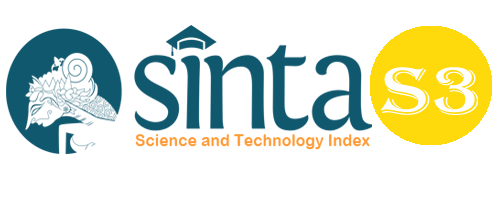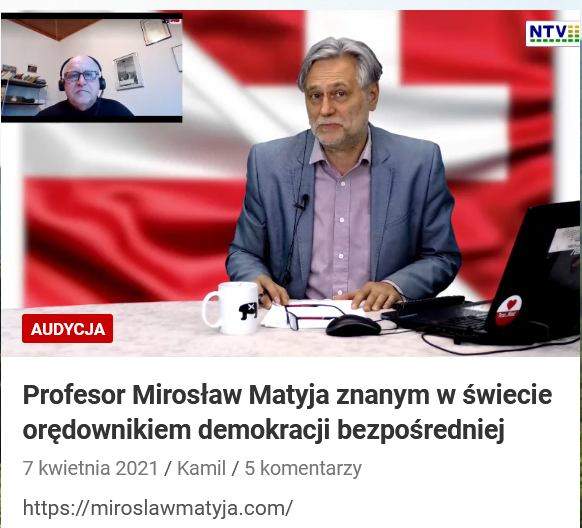The Prototype of the Stakeholder Collaboration Model in the Management of Homestay in the Tourism Village of Kembang Kuning
Abstract
This study seeks to develop a prototype model of stakeholder collaboration related to the management of homestays in the Kembang Kuning Tourism Village. The reason behind this research is the existence of homestays and the community as managers who feel the impact of the Covid – 19 Pandemic - One way that can be taken to get out and survive in the Covid-19 Pandemic is by collaboration. This study aims to a) identify the stakeholders who play a role in the management of homestays in the Kembang Kuning Tourism Village; b) analyze the form of roles given to homestays in Kembang Kuning Tourism Village, and c) design the prototype of the Stakeholder Collaboration Model that can be given to the manager of the Homestay in the Kembang Kuning Tourism Village. The method used in this research is descriptive with a qualitative approach, and data collection methods used are interviews, FGDs, and documentation. The results of this study are that there are 18 stakeholders involved in the management of the Homestay. However, of the 18 existing stakeholders, only eight stakeholders play an optimal and sustainable role. The rest is still not optimal and not sustainable. The design of the formed model shows that there is still a lack of sense of responsibility, less active communication links, and the existence of unequal understanding between stakeholders regarding the vision and mission of homestay management in Kembang Kuning Tourism Village.
Keywords
Full Text:
PDFReferences
Adi, Isbandi Rukminto. (2013). Community Intervention & Community Development as Community Empowerment Efforts. Jakarta: PT. Rajagrafindo Persada.
Assidiq, KA, Hermanto, H., & Rinuastuti, BH (2021). The Role of Pokdarwis in Efforts to Develop Halal Tourism in Setanggor Village. Jim Unrau-Master Of Management Journal10 A, 1.
Auerbach, C., & Silverstein, LB (2003).Qualitative data: An introduction to coding and analysis(Vol. 21). NYU Press.
Babbie, E. 2007. The practice of social research. Belmont: Thompson.
Bhalla, P., Coghlan, A., & Bhattacharya, P. (2016). Homestays' contribution to community-based ecotourism in the Himalayan region of India. Tourism Recreation Research, 41(2), 213-228.
Blaikie, Norman. 2010. Designing social research (2nd ed.). Cambridge: Polity Press.
Chin, Chee H.; Lo, May C.; Razak, Zaidi b.; Pasbakhsh, Pooria; Mohamad, Abang A. (2020). "Resources Confirmation for Tourism Destinations Marketing Efforts Using PLS-MGA: The Moderating Impact of Semirural and Rural Tourism Destination" Sustainability 12, no. 17:6787 https://doi.org/10.3390/su12176787.
Eccles, JS, & Harold, RD (1996). Family involvement in children's and teenagers' schooling. Family-school links: How do they affect educational outcomes, 3-34.
Fu, F. (2021). A Study on Tourism Development of Yinquan Homestay From Perspective of Tourists' Perception. In 6th Annual International Conference on Social Science and Contemporary Humanity Development (SSCHD 2020) (pp. 861-865). Atlantis Press.
Gray, B. (1989). Collaborating: Finding Common Ground for Multiparty Problems, Overcoming obstacles for successful collaboration.
Herdiana, D. (2019). The Role of the Community in the Development of Community-Based Tourism Villages. Master's Journal of Tourism (JUMPA), 6(1), 63-86.
Hermawan, H. (2016). The impact of the development of the Nglanggeran Tourism Village on the local community's economy. Journal of Tourism, 3(2), 105-117.
Hesse-Biber, Sharlene Nagy., and Leavy, Patricia. 2011. The practice of qualitative research (2nd ed.). California: SAGE.
Hesse-Biber, Sharlene. 2010. Qualitative approaches to mixed practice methods. Qualitative Inquiry, Vol. 16, No. 6, p. 455-468.
Hsiu-Yu Teng (2021). Can Film Tourism Experience Enhance Tourist Behavioral Intentions. The role of tourist engagement, Current Issues in Tourism. doi:10.1080/13683500.2020.1852196.
Ife, J., & Tesoriero, F. (2006). Community Development: Community-Based Alternatives in an Age of Globalization, Pearson-Education Australia, 3rd Edition.
Imron, M. (2020). Quadruple Helix Collaboration in Creating Innovation Concepts for Educational Tourism in Kampung Nanas Palauan Village.JPSI (Journal of Public Sector Innovations),4(2), 68-74.
Kanel, CN 2021. Poverty Alleviation, Sustainable Rural Tourism and Community-based Homestay Development in Nepal: An Exploratory Assessment, A Nepalese Journal of Participatory Development, Vol. 21, 13-23.
Karki, K., Chhetri, BBK, Chaudhary, B., & Khanal, G. (2019). Assessment of socio-economic and environmental outcomes of the homestay program at Amaltari village of Nawalparasi, Nepal. Journal of Forest and Natural Resource Management, 1(1), 77-87.
KC, Birendra. (2021). Ecotourism for wildlife conservation and sustainable livelihood via community-based Homestay: a formula to success or a quagmire?. Current Issues in Tourism, 24(9), 1227-1243. https://doi.org/10.1080/13683500.2020.1772206.
Kirana and Artis. (2020). "Development of Collaborative Governance-Based Tourism Village in Batu City." Journal of Public Administration, Volume 6, Number 1, Pg. 1-17.
Madeline, MC (2010), Engaging in Collaborative Partnerships to Support Reentry Center for Effective Public Policy, Department of Justice. The USA.
Mafaza, A., & Setyowati, K. (2020). Collaborative Governance in Tourism Village Development. Journal of Public Policy, Volume 11, Number 1, p. 1-58, DOI:10.31258/jkp.11.1.p.7-12
Manaf, A., Purbasari, N., Damayanti, M., Aprilia, N., & Astuti, W. (2018). Community-based rural tourism in inter-organizational collaboration: How does it work sustainably? Lessons learned from Nglanggeran Tourism Village, Gunungkidul Regency, Yogyakarta, Indonesia. Sustainability, 10(7), 2142.
McComb, EJ, Boyd, S., & Boluk, K. (2017). Stakeholder collaboration: A means to the success of rural tourism destinations? A critical evaluation of stakeholder collaboration within the Mornes, Northern Ireland. Tourism and Hospitality Research, 17(3), 286-297.
Mirimi, K., Vengesayi, S., Kabote, F., & Chikafu, J. (2014). Tour operator's perceptions on "Zimbabwe: A World of Wonders" tourism brand. IOSR Journal of Business and Management (IOSR-JBM) Volume, 16, 107-117.
Ningrum, P. A., et al. (2020). The Potential of Poverty in the City of Palangka Raya: Study SMIs Affected Pandemic Covid 19. Budapest International Research and Critics Institute-Journal (BIRCI-Journal) Volume 3, No 3, Page: 1626-1634
Nunkoo, R., & Ramkissoon, H. (2011). Residents' Satisfaction With Community Attributes and Support for Tourism. Journal of Hospitality & Tourism Research, 35(2), 171–190. http://doi.org/10.1177/1096348010384600.
Oktarina & Nababan. (2021). Strengthening Village Economy during Pandemic, 6th International Conference on Social and Political Sciences (ICOSAPS 2020), Atlantis Press SARL, Vol. 510, No. 495-500.
Oktarina & Nababan. (2021). Strengthening Village Economy during Pandemic, 6th International Conference on Social and Political Sciences (ICOSAPS 2020), Atlantis Press SARL, Vol. 510, No. 495-500.
Pusiran, AK, & Xiao, H. (2013). Challenges and community development: A case study of Homestay in Malaysia. Asian Social Science, 9(5), 1-17 is available at https://doi.org/10.5539/ass.v9n5p1.
Rahmawati, Anugrah, Hati and Roziqin. (2021). Tangguh Village: A Form of Inter-Stakeholder Collaboration in Responding to the COVID-19 Pandemic. Journal of Social Development Studies, 2(1), 39-51.
Rahu, PD (2021). Pentahelix Model Collaboration in the Development of Sei Gohong Tourism Village, Bukit Batu District, Palangka Raya City. JISPAR, Journal of Social Sciences, Politics and Government, 10(1), 13-24.
Rizkiyah, P., Liyushiana & Herman. (2019). The synergy of Penta helix in tourism recovery after the eruption of the Sinabung volcano in Karo district, North Sumatra. Journal of IPTA, ISSN, 7(2), 2019.
Saleh, A., Mujahiddin. (2020). Challenges and Opportunities for Community Empowerment Practices in Indonesia during the Covid-19 Pandemic through Strengthening the Role of Higher Education. Budapest International Research and Critics Institute-Journal (BIRCI-Journal). Volume 3, No 2, Page: 1105-1113.
Shukor, MS, Salleh, NHM, Othman, R., & Idris, SHM (2014). Perception of homestay operators towards homestay development in Malaysia. Journal of Management (UKM Journal of Management), 42.
Sihombing, E. H., Nasib. (2020). The Decision of Choosing Course in the Era of Covid 19 through the Telemarketing Program, Personal Selling and College Image. Budapest International Research and Critics Institute-Journal (BIRCI-Journal) Volume 3, No. 4, Page: 2843-2850.
Sri, AAP, & Sari, NPR (2018). The Impact of Post-Mount Agung Eruption Tourism for Local Community Accommodation Business in Kedewatan Village, Ubud, Bali. Journal of Tourism and Hospitality, 2(2), 120-135.
Sumiasih, K. (2018). The Role of BUMDes in the Management of the Tourism Sector (Study in Desa Pakse Bali, Klungkung Regency). Udayana Master Law Journal, 7(4), 565-585.
Walter, P., Regmi, KD, & Khanal, PR (2018). Host learning in community-based ecotourism in Nepal: The case of Sirubari and Ghalegaun homestays. Tourism management perspectives, 26, 49-58.
Wondirad, A., Tolkach, D., & King, B. (2020). Stakeholder collaboration is a significant factor for sustainable ecotourism development in developing countries: tourism Management, 78, 104024.
Yuningsih, N. (2018). The Influence of Leadership, Motivation, Training, and Work Environment on Employee Performance at the Regional Water Company (PDAM) Tirta Satria, Banyumas Regency (Doctoral dissertation, IAIN Purwokerto).
Yuningsih, T., Darmi, T., & Sulandari, S. (2019). The Penta helix model in tourism development in the city of Semarang. JPSI (Journal of Public Sector Innovations), 3(2), 84-93.
DOI: https://doi.org/10.33258/birci.v5i1.4131
Article Metrics
Abstract view : 115 timesPDF - 48 times
Refbacks
- There are currently no refbacks.

This work is licensed under a Creative Commons Attribution-ShareAlike 4.0 International License.

This work is licensed under a Creative Commons Attribution-ShareAlike 4.0 International License.

_.gif)

















_.gif)



